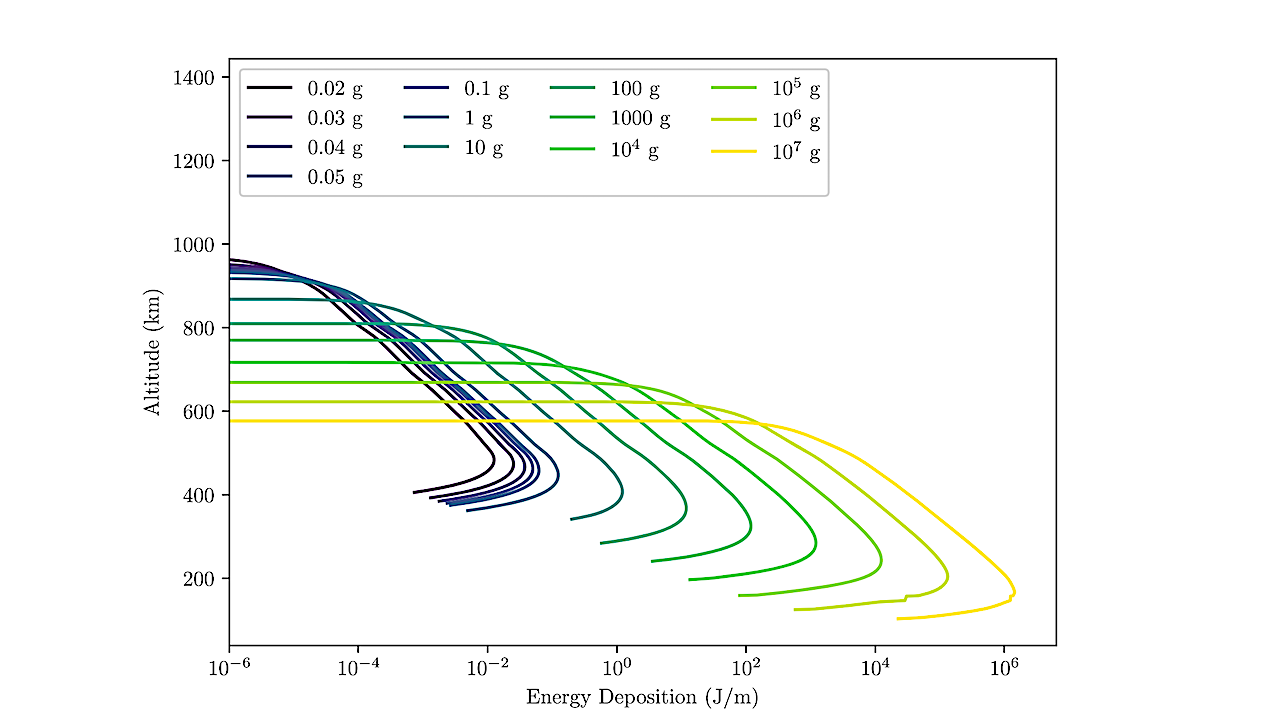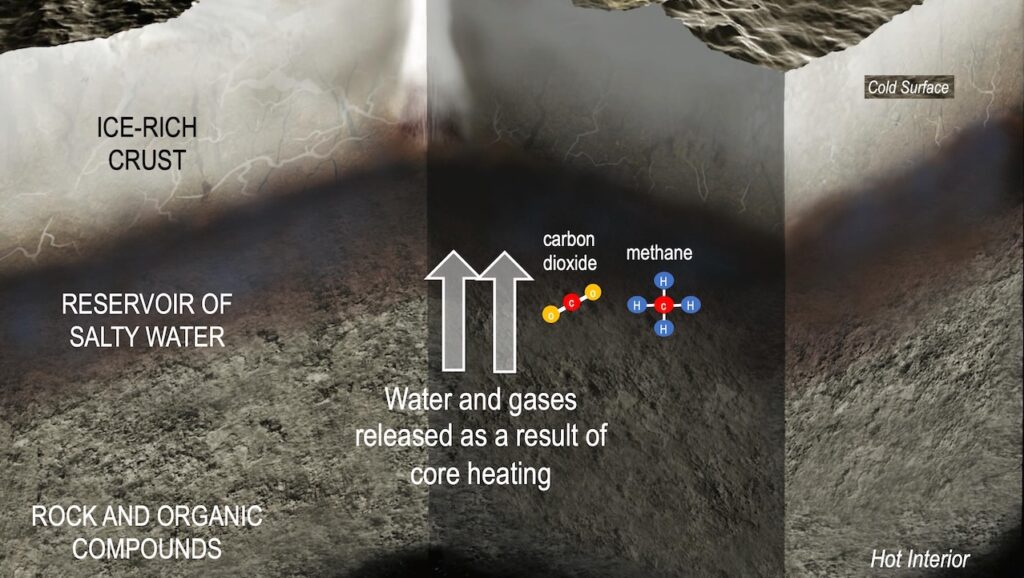Shock Synthesis of Organic Molecules by Meteoroids in the Atmosphere of Titan

Thermochemical modeling and shock-tube experiments show that shocks applied to N2/CH4 gas mixtures can synthesize organic molecules. Sufficiently large, hypersonic meteoroids entering the atmosphere of Saturn’s moon Titan should therefore drive organic chemistry.
To do so meteoroids must be sufficiently large compared to the atmospheric mean free path at a given altitude to generate shocks, and deposit enough energy per path length to produce temperatures high enough to excite and dissociate the relevant molecules. The Cassini spacecraft imaged multiple meteoroid impacts on Saturn’s rings, allowing for the first time an empirical estimate to be made of the flux and size-frequency distributions of meteoroids in the millimeter-to-meter size range.
We combine these results with an atmospheric entry model and thermochemical and experimental shock production efficiencies for N2/CH4 atmospheres and calculate the shock production rates for HCN, C2H2, and C2H4 as well as the resulting H2 generation. We find that meteoroids may be producing these molecules at as much as ∼1% the production rate of photochemistry driven by UV photons, and may be depositing more energy than magnetospheric ions and 90-100 nm UV photons.
Moreover, these meteoroids produce these organic molecules hundreds of kilometers lower in Titan’s atmosphere than the relevant UV photons and magnetospheric ions penetrate, with peak production occurring between 200 and 500 km altitudes, i.e., at the observed haze layer. Meteoroid-driven shock generation of molecules may therefore be crucial to understanding Titan’s atmospheric chemistry.
Erin E. Flowers, Christopher F. Chyba
Comments: 12 pages, 6 figures
Subjects: Earth and Planetary Astrophysics (astro-ph.EP)
Cite as: arXiv:2307.10293 [astro-ph.EP] (or arXiv:2307.10293v1 [astro-ph.EP] for this version)
Journal reference: Planet. Sci. J. 4 (2023) 127
Related DOI:
https://doi.org/10.3847/PSJ/acdfc9
Focus to learn more
Submission history
From: Erin Flowers
[v1] Tue, 18 Jul 2023 14:43:39 UTC (801 KB)
https://arxiv.org/abs/2307.10293
AStrobiology








